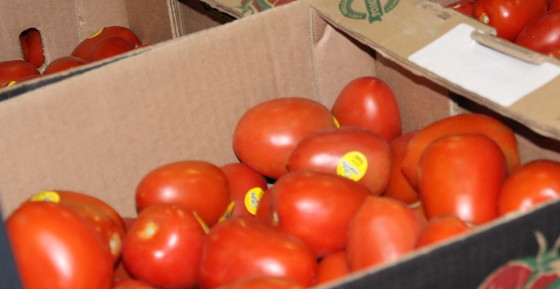Harmonized Tariff Schedule Expands List of Codes Available for Organic Oversight
The USDA National Organic Program (NOP) continually works to strengthen farmer and consumer trust in the USDA organic label. As organic supply chains become increasingly more complex, we are building partnerships with federal enforcement agencies with authority at the United States borders. Our ability to identify organic imports entering the United States is key to maintaining strong organic trade enforcement. One example is our partnership with U.S. Customs and Border Protection (CBP), providing us with new electronic import oversight tools to monitor imports in real-time, without impeding legitimate trade.
CBP uses the Harmonized Tariff Schedule (HTS) to classify shipments arriving in the U.S. Each commodity onboard has an associated HTS code, a unique 10-digit number that determines the tariff tax or duty applied to goods imported to the United States from other countries. An HTS code also classifies or describes the product in detail so reporting measures are specific and accurate. HTS codes are established and maintained by the U.S. International Trade Commission (USITC) and are assigned universally to all commodities – including multiple varieties of one product. For example, there are different HTS codes for different kinds of fresh tomatoes, like plum, cherry, grape, Roma, or round.
 Shipment of organic tomatoes entering the U.S. through the Port of Nogales
Significant work goes into each HTS code application, starting with required documentation of at least $1 million in annual imports and at least three different importers of the commodity. Two years ago, there were only a few dozen HTS codes specific to organic commodities. Working through our sister program AMS Market News and with trade, USDA has been strategically expanding that reach, starting with the highest value organic imports. There are now 84 organic import HTS codes covering several different commodities like soybeans and berries, which are high-value imports and active targets for enforcement surveillance. This year, the USITC added 12 more HTS codes for organic commodities, including wheat, meslin, potatoes, cucumbers, bell peppers, squash, and olive oil.
Moving forward, organic-specific HTS codes will continue to be an important information source to track the volume, value, and origin of imports, particularly as electronic NOP Import Certificates are phased in. Some importers are already voluntarily using the new electronic organic import certificates and identifying other stakeholders who can help us justify applications for additional organic HTS codes. We are working with partners across the organic and import industries to identify other high-volume commodities to build the case for more organic HTS codes to protect the organic seal and support supply chain traceability.
Watch for an Organic Insider announcement that training on using the NOP Electronic Import Certificates has been added to the Organic Integrity Learning Center, or email us at NOP.Guidance@usda.gov if you are interested in learning more about using the system now as part of the voluntary pilot phase.
|